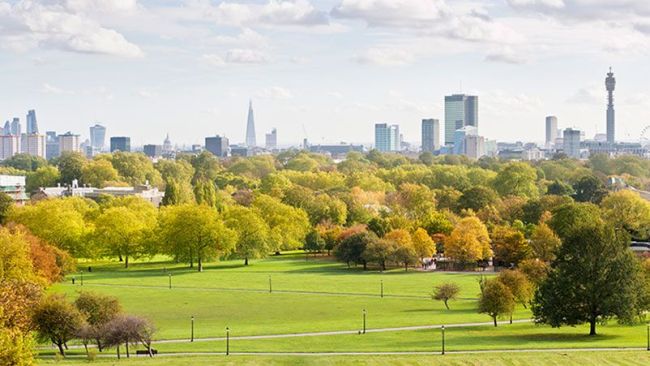
Housing costs for London’s growing families
The huge surge in the capital’s property prices over the past decade is having a profound effect on where Londoners live and the type of housing needed to accommodate them


Words by Graham Norwood
If you thought the days of strong competition for properties might be fading, consider the rise and rise of the three-bedroom house. With increased demand and limited supply, these family homes are a property ‘sweet spot’ in many UK cities, attracting interest from buyers even at times when the rest of the housing market is relatively static.
The most active purchasers are young parents with growing families. Having sold flats that suited their lifestyle in their twenties, they are looking for three-bedroom houses offering more living space and a garden for energetic children.
Their numbers have been increased by Help To Buy, the government scheme dating from 2013 that has mostly assisted younger purchasers. Over 50% of property transactions facilitated through Help To Buy have been of three-bedroom homes.
This alone would be enough to create sustained demand. But young house hunters not only have to compete against each other, they also face competition from a rival type of buyer – downsizers. No longer needing larger properties, and keen to reduce maintenance bills, these older, equity-rich buyers typically target three-bedroom homes near to their grown-up children, putting further pressure on limited housing stock.
Unsurprisingly, the large number of buyers seeking one specific type of home has created a price premium. But, as ever, location and lifestyle have a role to play.
Analysis by Strutt & Parker (shown below) reveals the cost differential between a two-bedroom apartment and a three-bedroom house in cities outside of London.
Most expensive cities for a growing family
Showing cost difference between 2-bed flat and 3-bed house
Least expensive cities for a growing family
For each city the data provided is at Local Authority geography
Figures based on the average price of a two-bedroom flat and a three-bedroom house July 2015-June 2016
Data provided by Rightmove/analysis by Strutt & Parker
‘The largest price gaps are where competition for three-bedroom houses is highest,’ explains Stephanie McMahon, Head of Research at Strutt & Parker. ‘The most expensive cities generally reflect markets that are popular with growing families. Four of the top five are in the southeast commuter belt, so this trend is most acute for those who have relocated from London.’
The cost of moving into a three-bedroom family home in St Albans is £185,640 – the largest price gap in the UK. In that city, half of Strutt & Parker’s buyers are from London and are driven by two main factors: commutability (you can reach St Pancras in 21 minutes) and schools (the majority in St Albans are Ofsted-rated ‘good’ or ‘outstanding’).
The next most expensive spot is Winchester, with an average cost for growing families of £160,108. That high figure is perhaps not surprising given that the city has been named Britain’s best place to live in separate surveys by the Sunday Times and the Halifax.
‘What characterises these types of locations is liveability,’ says Peter Newall of the Royal Institution of Chartered Surveyors. ‘They’ve all got good transport, big parks and leisure quarters.’
Similar descriptions also fit many cities in the top 10 – Salisbury and Ely, for example – where scope for new-build is limited but demand remains high due to their family-friendly education and social infrastructures.
‘Key cities outside of London are showing exceptional growth this year,’ explains Guy Robinson, Head of Residential at Strutt & Parker. ‘That correlates strongly with the top performing locations for growing families in our research, including the likes of Canterbury and Cambridge. These historic cathedral cities offer a very attractive lifestyle that many families aspire to.’
Three-bedrooms homes are already highly sought-after, but an emerging trend is set to create even greater demand for this type of housing in the future. Multi-generational living, where children, parents and grandparents all live under one roof, is becoming more widespread due to longer lifespans and spiraling care costs. The National Home Building Council (NHBC), which represents house builders, says 7% of households are now multi-generational. However, this does not mean the families are particularly large. Typically, such households consist of two parents with one or two children and one grandparent.
Of these multi-generational households, some 58% currently live in three-bedroom homes and the NHBC says there is demand for 125,000 new homes per year for this emerging sector.
‘Multi-generational housing offers a range of opportunities, from modifying suitable existing home designs to designing new homes with flexible layouts to suit different household compositions throughout a lifetime,’ says NHBC’s research head, Neil Smith.
The house building industry is slowly beginning to meet this new demand. Government figures show that in 2006 just 28% of new homes had three bedrooms, but by 2016 this had risen to 36%.
So will we one day have enough homes to meet the requirements of modern family life? Don’t bank on it.
‘The demographics that underline the property market are constantly changing,’ says Stephanie McMahon. ‘But there will always be people stepping up or scaling down, depending on personal and family needs. The three-bedroom house is where those two sets of buyers meet.’
If you are in that position now, seeking a three-bedroom home as the next step for your family, get your elbows out because you’re likely to be facing a lot of competition.